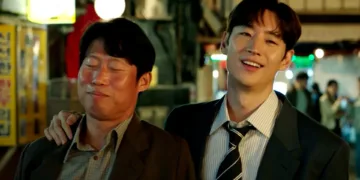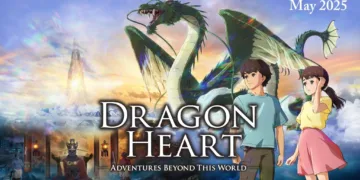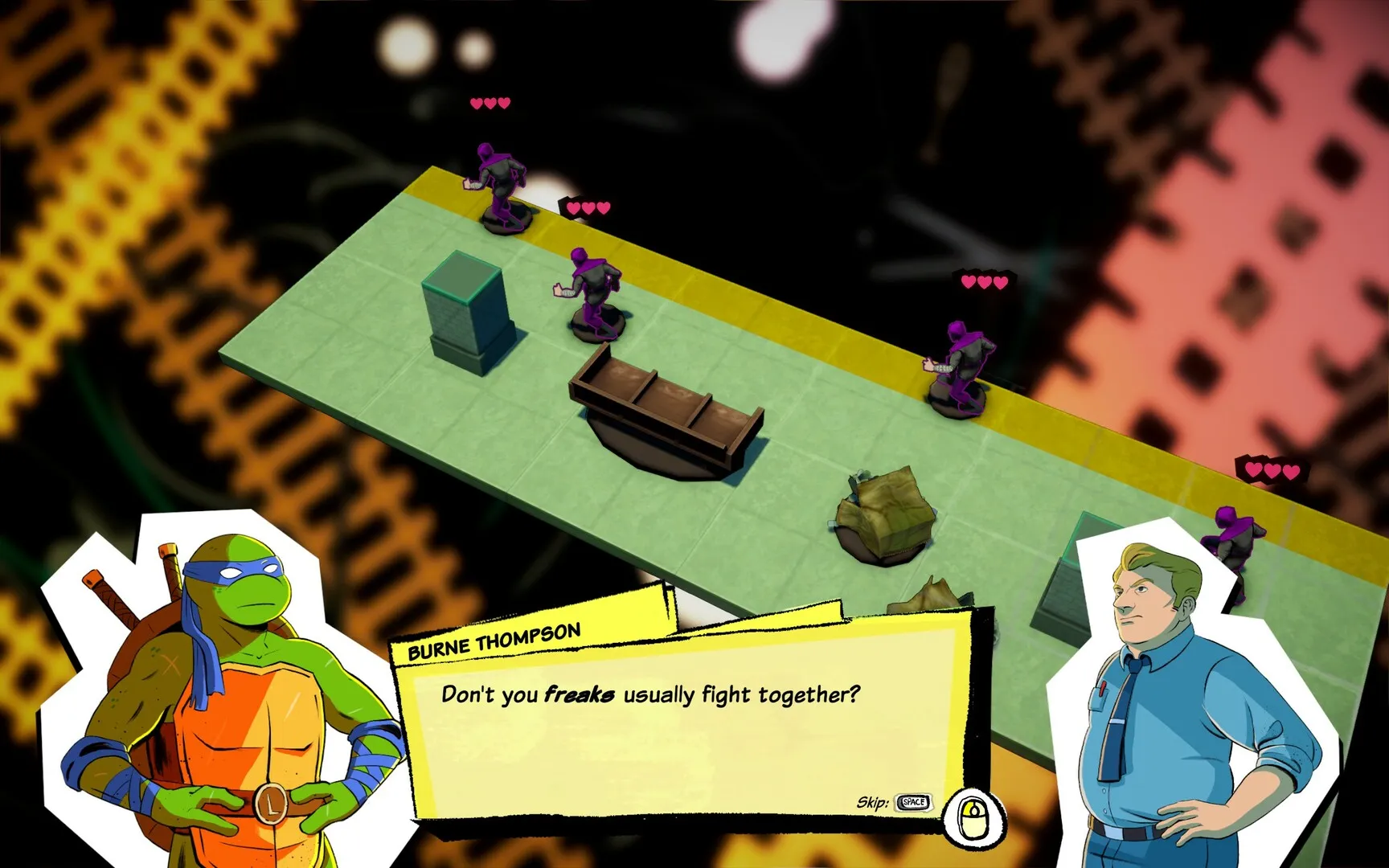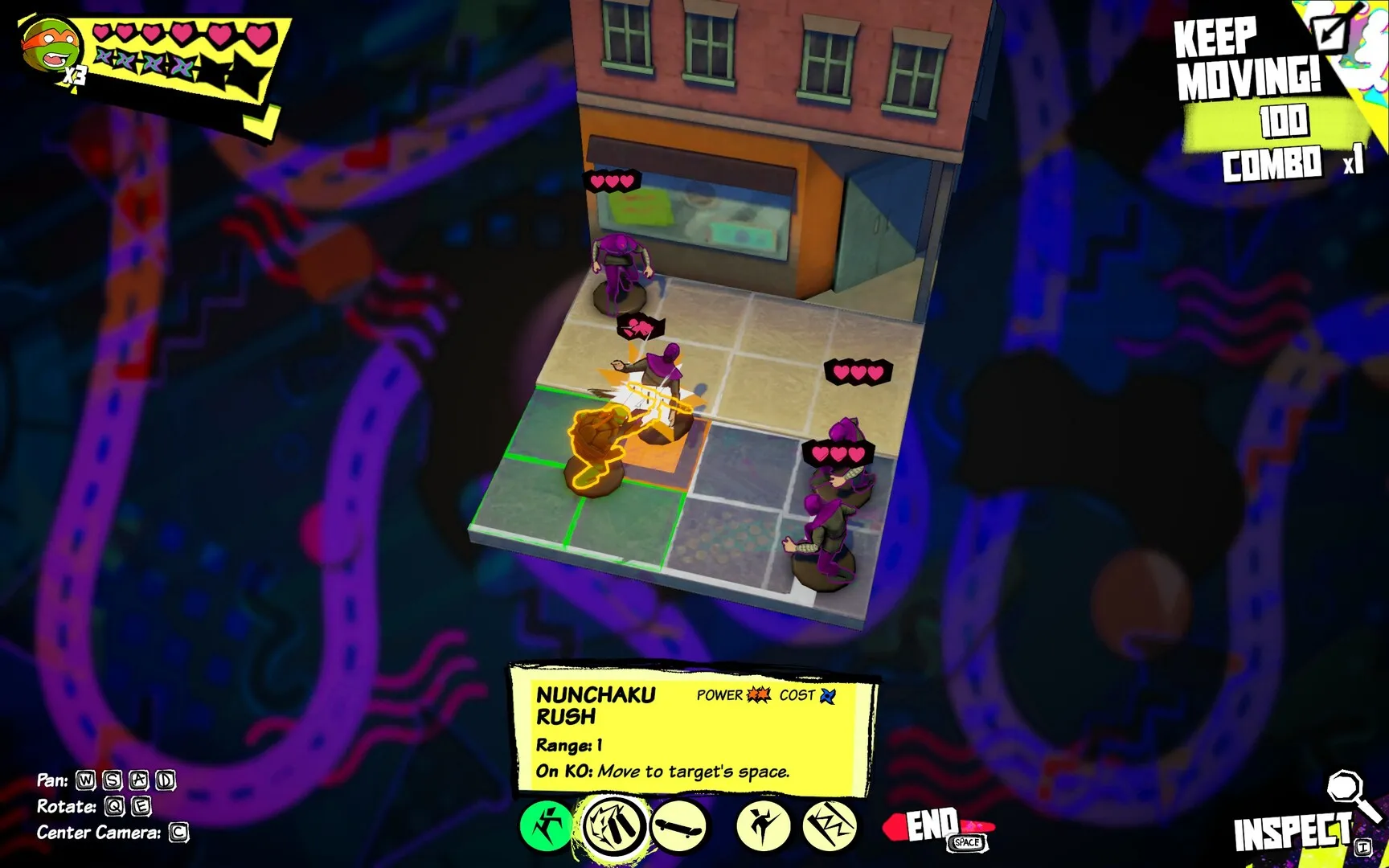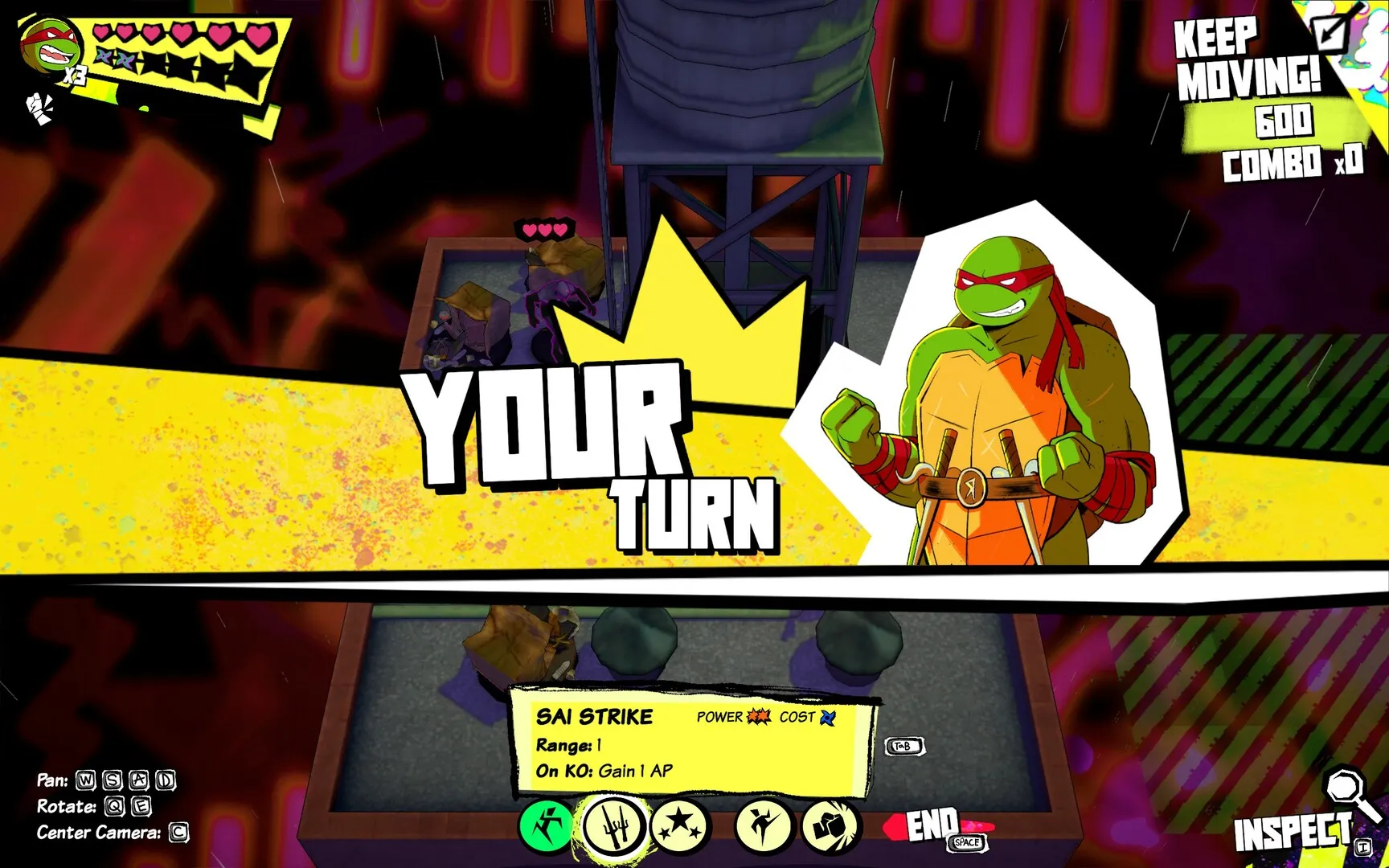Teenage Mutant Ninja Turtles: Tactical Takedown arrives from indie studio Strange Scaffold as a concise, grid-based tactics adventure. Set in a post-Splinter, post-Shredder New York City, the game casts each Turtle in a solo mission to thwart Karai’s Foot Clan resurgence. The six-hour campaign skips lengthy exposition, delivering its plot through brief text-box exchanges before and after each level.
At its heart, Tactical Takedown translates the punch-driven momentum of classics like Turtles in Time into a turn-based framework. Battles unfold on small, isometric boards that “mutate” as the ground disappears behind you, urging constant forward motion akin to an arcade brawler’s screen scroll.
Despite its tactical depth—think XCOM meets collectible miniatures—the game has the brisk pace and pick-up-and-play appeal of a Konami beat-’em-up. This marriage of board-game structure and high-octane flair defines the experience, making it both familiar to TMNT veterans and inviting to newcomers.
Tactical Combat and Core Mechanics
Moves play out in six-point turns: each Turtle spends action points on steps, attacks or special skills. This AP economy demands a balance between positioning and offense. The board itself isn’t static: red-tinted sections collapse each turn, instantly KO’ing any character caught there and revealing new zones beyond. This dynamic grid turns every decision into a race against disappearing terrain.
Leonardo builds momentum through combo chains. Landing a strike generates a “Radical” buff, boosting his next slash and encouraging chains of KOs. Donatello excels at area control: setting electrical traps in sewer water turns toxic tiles into damage zones and funnels Foot Clan into chokepoints. Raphael trades raw strength for frenzy: sai attacks grant extra AP, letting him burst through clusters and maintain his tempo. Michelangelo, true to his name, zips across skylines on a skateboard, using mobility to juggle foes and clear crowds with acrobatic flair.
Beyond these core kits, an in-game shop lets players spend earned shells on bonus moves—like a vampiric attack for Raphael or extended range for Donnie—altering each Turtle’s rhythm.
Environmental hazards keep tension high: subway cars barrel through tunnels, hot-dog stands heal or block paths, and toxic pools punish careless steps. Veteran players learn to compensate for scant tooltips—moves list only range shapes, not their grid footprint—by tabbing through descriptions or testing effects in combat. This minor opacity can trip newcomers, but mastering it adds satisfaction to each level’s risk-reward dance.
Narrative and Character Spotlight
Set after both Master Splinter and Shredder have fallen, the campaign hinges on each Turtle’s solo struggle. Karai’s command of the Foot Clan forces the brothers apart, sending Leo into the subway tunnels, Donnie into sewer depths, Raph across city rooftops and Mikey into crowded streets.
Text-box dialogue bookends each mission, revealing how grief and blame fray their bonds. Leonardo wrestles with self-doubt under his mentor’s shadow, while Donatello sheds meekness to challenge Leo’s decisions. Raphael’s aggression masks loneliness and Michelangelo’s humor hides fear.
Each chapter’s biome echoes its Turtle’s arc: the cramped tunnels heighten Leo’s pressure, the toxic sewers mirror Donnie’s internal conflict, rooftop leaps mirror Raph’s explosive mood swings and urban streets underscore Mikey’s need for freedom.
The reunion twist in chapter four reintroduces teamwork without altering solo mechanics, reinforcing the story’s theme that brotherhood persists even when you fight alone. These emotional beats deepen what could have been a bare-bones tactics title, lending weight to every steel-toed kick.
Visual Presentation and Audio Design
The game sports a cel-shaded aesthetic that recalls ‘80s cartoon cells and Eastman & Laird’s original comics. Turtles and Foot Clan units resemble tabletop miniatures, shifting poses for each attack or status effect. A zoomed-out camera showcases entire boards but sometimes obscures facial expressions, muting character flair.
Musically, a pulse-driven soundtrack nods to classic TMNT themes, spurring action with brass stabs and guitar riffs. Sparse voice clips punctuate key moments, but most dialogue relies on text boxes, trading cinematic immersion for gameplay flow.
Ambient sounds—subway rumbles, sewer drips, skateboard wheels—ground each map and provide clear audio cues for hazards. This combination of stylized visuals and functional sound design keeps focus on strategy without losing the turtles’ trademark energy.
Replay Value, Level Design and Longevity
Tactical Takedown offers twenty levels that rarely exceed fifteen minutes apiece. The brisk pacing keeps momentum high but limits the variety of objectives and environments. Most missions ask you to reach a zone or eliminate a quota of enemies, with only a handful of hold-out or boss stages to break the routine.
An arcade-style scoring system grades KOs, remaining continues and speed, converting performance into shells spendable in the shop. Unlockable abilities, preset loadouts and music tracks encourage revisits, while par scores drive high-score chases. Yet enemy variety plateaus early—new Foot types and map hazards stop appearing halfway through—leaving later missions feeling familiar.
The solo focus underscores the story but forgoes squad tactics. Without controlling all four Turtles at once, you miss combo potential and layered strategies that a full party would allow. More objective diversity—like timed escapes or multi-stage map puzzles—could have deepened engagement. Still, high-score runs and loadout experimentation grant enough incentive to return and refine your approach.
The Review
Teenage Mutant Ninja Turtles: Tactical Takedown
Tactical Takedown transforms the TMNT license into a brisk, tactical thrill that rewards mastery of each Turtle’s unique toolkit. While its solo missions and repeating map types sometimes limit long-term variety, the game’s collapsing arenas, arcade-style scoring and vibrant presentation make every run feel urgent and fun.
PROS
- Engaging blend of turn-based tactics with arcade-style momentum
- Distinct, character-faithful toolkits for each Turtle
- Dynamic “mutating” maps that keep battles tense
- Arcade scoring and unlockable loadouts boost replayability
- Vibrant cel-shaded art and lively environmental audio cues
CONS
- Solo-only missions limit squad-based strategy depth
- Repetitive level objectives and enemy types
- Sparse tooltips can confuse newcomers
- Few memorable boss encounters
- Campaign brevity may leave tactics veterans wanting more




























